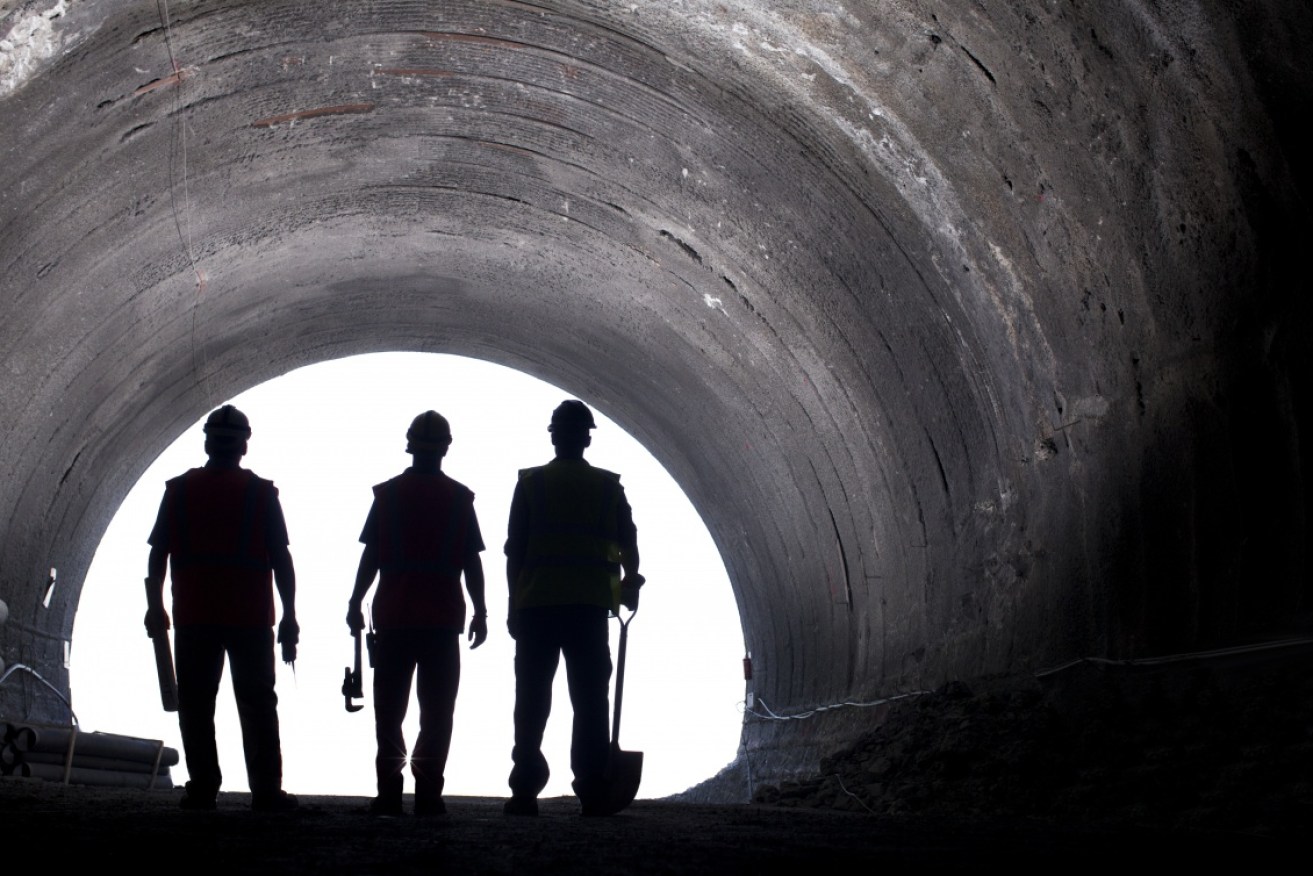Workers could be slugged by ‘do-nothing’ MYEFO

There is some good news: more full-time jobs. Photo: Getty
The government did almost nothing in Monday’s MYEFO to shield workers from a ratings downgrade and the economy’s “downward spiral”, a senior economist has warned.
Treasurer Scott Morrison announced a welfare crackdown, modest spending cuts and very little fiscal stimulus in the mid-year budget update, effectively leaving to the Reserve Bank the mammoth task of helping struggling workers.

The government is holding the line on spending cuts. Photo: AAP
The MYEFO managed to scrape a pass with all three ratings agencies, but many fear it is only a matter of time before Australia’s ‘AAA’ tumbles. And it is small consolation for households doing it tough.
Industry Super Australia chief economist Stephen Anthony said the path the government chose in the budget update was the “easy way out”.
“The government is controlling spending, but possibly by the most modest possible way, and on the other hand we’ve seen revenue write-downs over the forward estimates due to the slowing economy, which we’re doing nothing to address.”
MYEFO could’ve better protected the AAA rating and stimulated the economy if it had announced big tax reform (including no more perks for landlords), more infrastructure spending, and a new computer system to track wasteful spending by Commonwealth departments and states, Mr Anthony said.
Many others, including economists Stephen Koukoulas and Ross Garnaut, were disappointed by the lack of government action. Unions and bosses reacted unhappily too.
The Australian Council of Trade Unions attacked the combination of spending cuts and a contracting economy as the “worst of both worlds”, while the Australian Chamber of Commerce and Industry called on Parliament to collaborate on budget repair.
Struggling? It’s not just you
The mid-year budget update confirmed that workers are hurting, and that things will probably get worse.

Several key forecasts, including wage growth and employment, were revised down in MYEFO. Photo: Getty
Treasury revised down its four-year forecast for tax revenue by $30.7 billion, blaming more than half ($18.3 billion) on lower expectations for individual income taxes. It’s simple: as wages shrink, the government gets less tax.
Employment growth will fall in the short term, according to the MYEFO. Treasury dropped its May forecast by 50 basis points to 1.25 per cent in 2016-17, and 25 basis points to 1.50 per cent in 2017-18.
The wage growth forecast also fell by 25 basis points over the next two years, down to 2.25 per cent in 2016-17 and 2.5 per cent in 2017-18.
With less money in their pockets, families will spend less. Treasury shaved 25 basis points off household spending for this financial year, revising it down to 2.75 per cent growth.
Downgrade may hurt you the most
A credit rating downgrade from AAA to AA+ is now only a matter of time for Australia, according to many analysts, given that the MYEFO only reduced this year’s forecast deficit by $600 million – and added $10.3 billion to the four-year deficit tally.

All eyes are now on S&P. Will an eventual downgrade drive up the cost of basic banking products? Photo: Getty
All three of the big global ratings agencies – Fitch, Moody’s and Standard & Poor’s – issued statements on Monday saying no downgrades were imminent. S&P, the only one to have Australia on a “negative watch”, is the most likely to cut.
Cost blowouts in the National Disability Insurance Scheme, corporate tax cuts, defence spending, services for an ageing population, or failure by the government to legislate its so-called “zombie cuts” could all be reasons for a downgrade in future. And it’s you who could lose out.
Australia’s sovereign credit rating measures how likely the government is to be able to repay its bond holders on time and in full. Generally, the better the rating, the less interest the government has to pay the big institutions that buy its bonds.
A widely-held view is that because many investment firms want Australian bonds, a downgrade won’t force Treasury to lift interest payments by all that much.
Instead, workers may be the ones who get slugged. A downgrade would likely force the big banks, which are heavily reliant on foreign capital, to pay higher bond rates. Guess who’ll bear the costs.
No big jobs package
Treasurer Morrison made it clear he will continue his attempts to constrain spending, as evidenced by the $600 million trimmed from this year’s forecast deficit.

It may fall to RBA governor Philip Lowe to step in if household spending drops further. Photo: AAP
“Once again the government has demonstrated that we do not spend more than we save, and that the predominant mechanism for restoring the budget to balance is by getting expenditure under control,” he told reporters on Monday.
The MYEFO did contain an extra $813 million for 75 infrastructure projects over four years, most earmarked for regional areas, where unemployment is highest. Most were already promised at the election.
The Treasurer noted that high unemployment and low wage growth emphasised “the importance of policies that encourage economic growth”, but this was a reference to company tax cuts, not extra government spending to help workers.
It will therefore fall largely to the RBA, which has all but exhausted interest rate cuts, to stimulate the economy if inflation stays low.
Welfare crackdown on the poor
The Treasurer took credit for the fact that the deficit will only worsen by an estimated $10.3 billion over the next four years, despite tax revenue shrinking by $30.7 billion.

A big chunk of savings are expected to come from the pockets of welfare recipients. Photo: AAP
But most of that $20 billion in savings actually came from what are called “parameter variations” — such as the prediction that childcare payments will cost $7.6 billion less over the next four years than first thought. Only $2.5 billion in savings can be directly attributed to the government.
Of that figure, most ($2.1 billion) is forecast to come from a major welfare crackdown. The Department of Human Services will expand its fraud prevention and debt recovery, the government announced.
It is the push to claw back welfare payments after they’ve been paid that concerns welfare groups the most.
The Australian Council of Social Services slammed the crackdown, saying it was a recipe for growing inequality because it again targeted the nation’s poorest.








